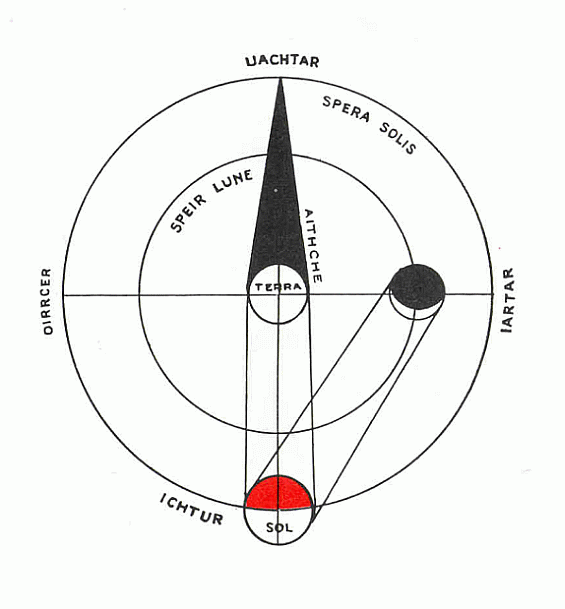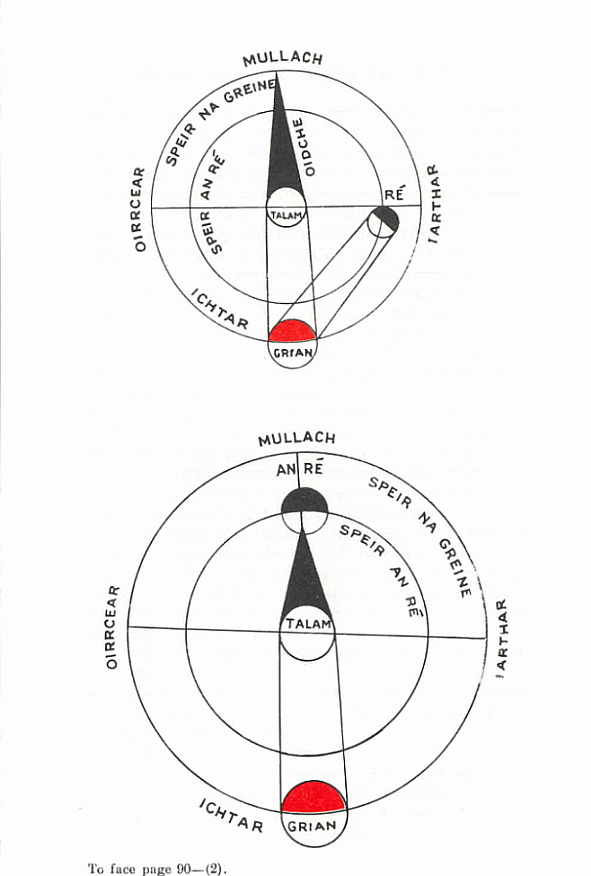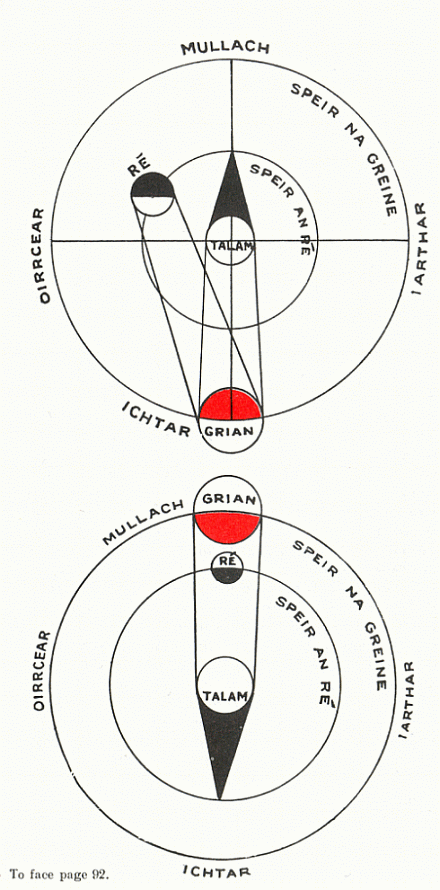
There is nothing light-giving in the moon except what it borrows from the sun, and both are spherical like the figure of a round ball; for if they were level planes, as the ignorant have asserted, when they would be in the east or west of the firmament, only the edges of them would be visible, whereas they would be completely visible at the top of the firmament. Since they do not appear more clearly spherical in the highest point of the firmament than in any other of those places, let it be understood that they are spherical, and not flat. That spherical portion which we see in each of them is only a hemisphere, i.e., half a sphere, and the other half is invisible. Thus, it is clear that the sun, moon, planets, and stars have all a spherical form, for from whatever side they are viewed, they appear round.
As I have said, the moon has no light of its own nature, and it is dark and polished (?) like iron which has been cleaned; and whatever light it has, it borrows from the sun; and its sphere is the sphere that is nearest the earth, between the heavenly bodies, and the sphere of the sun is the fourth above it. And, although they are far from each other, when the moon is beneath the sun in exactly the same degree as it, then it illumines the upper part of the moon and the side near us is dark, and it is full dark moon with us. Therefore we see nothing of the moon at that time.
When the moon leaves that exact degree in which it is beneath the sun, and moves by degrees away from it eastward, then the light moves by degrees westward.
The light which the upper part of it borrows from the sun, illumines the lower edge of it, and then the moon is in its prime, i.e., with its first light turned to us, for that is the first course in which we see it; and the further eastwards it moves from
When the moon inclines westwards from the diameter of the sun, i.e., from the straight line in which it is, to the other side of the earth opposite the sun, the light of the moon beside us moves upwards by degrees, and the same area of it is darkened at its wane as has been illumined at its prime, and thus, as much of it as is illuminated every night for fourteen nights, is darkened every night from then until the end of the month, until it is exactly beneath the sun in the same degree as it the sun, between it and the earth, and then the side towards us is dark and the side above light. And to make this clearly understood, I will make a figure here below in which I will place the sun to one side of the earth—the western side—and the moon 14 degrees eastwards from it, a little over the earth, and I will make it all dark except the western edge of it which is nearest the sun, which shows it to be at its prime.

I will make again another figure in which I will place the moon at the top of its own sphere at the end of the seventh day of the month, with half of it light and half dark, and I will place the sun to one side of the earth—to the west side.
And I will make moreover a third figure, in which I will place the moon in the east exactly with its upper half dark and its lower half, which is opposite the sun and the earth, light. I will place the sun as having set at that time at one side of the earth, etc. Here yonder is the figure itself.

I will make moreover a fourth figure, and will represent the half of the moon which is nearest the earth light, and the other half dark, as the moon is on the tenth day of the month, and I will place it exactly in the east, and the sun exactly in the middle beneath the earth.
After that I will make a fifth figure in which I will place the moon at the top of its own orbit in the same degree as the sun, and represent the upper half of it light and the lower dark. Here is the figure on the other page.
